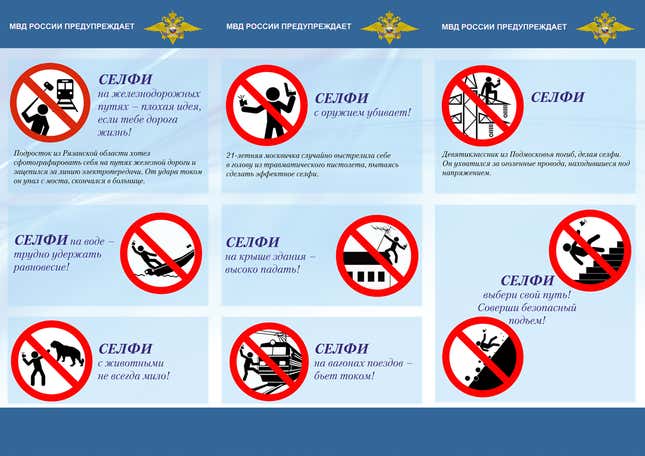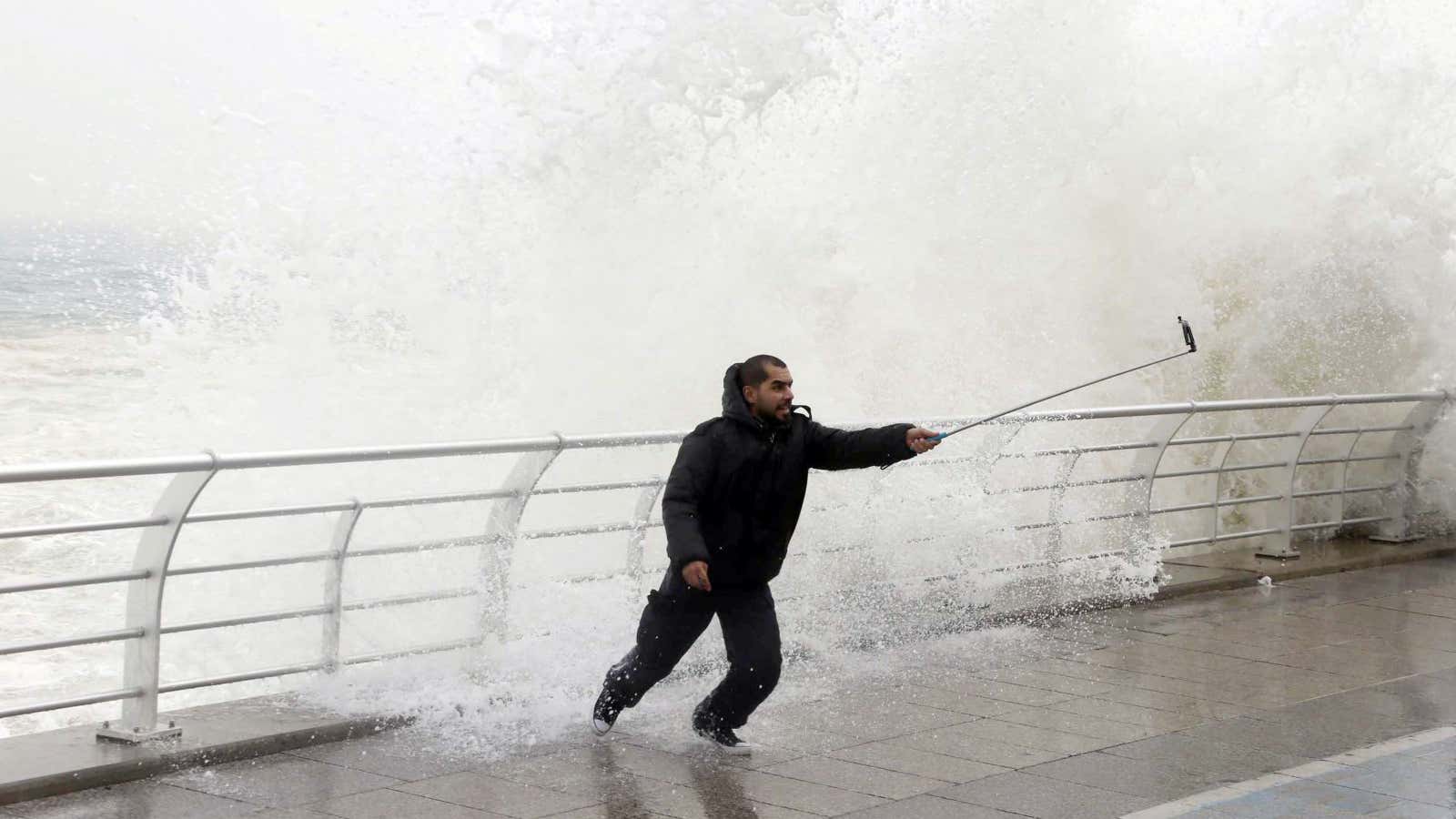Russia’s police force has unveiled new brochures, signs, and online notices urging the public to stop putting themselves in dangerous situations for the sake of selfies.
The brochure pretty much speaks for itself, using helpful graphics to illustrate some inadvisable selfie-taking practices, including taking selfies in front of speeding trains, with firearms, while falling down mountains, or with wild beasts.

Agence France Presse reports that more than 100 people have hurt themselves and dozens have died while posing for selfies in Russia this year. One woman accidentally shot herself in the head while trying to photograph herself holding a pistol (she survived); a man climbing a railroad bridge for his picture died after accidentally touching live wires.
“We have noted recently that the number of accidents caused by lovers of self-photography is constantly increasing,” a government representative told AFP. ”Before taking a selfie, everyone should think about the fact that racing after a high number of ‘likes’ could lead him on a journey to death and his last extreme photo could turn out to be posthumous.”
Starting today, Russian police officers will be handing out cautionary brochures to young people in public places, and the interior ministry will be promoting its safe selfie guidelines on social media.
The Russian regulations do point to an international problem: The increasing popularity of self-portraits captured on mobile phone cameras has driven people to risky behavior—leaning over railway tracks, for example, or handling cell phones while driving or even flying. A recent death by lightning strike in Wales was thought to have occurred because the victim was carrying a metal selfie stick.
The Russian guide to “safe selfies” may seem to state the obvious. But with the selfie-related death toll rising, it may still be necessary.




